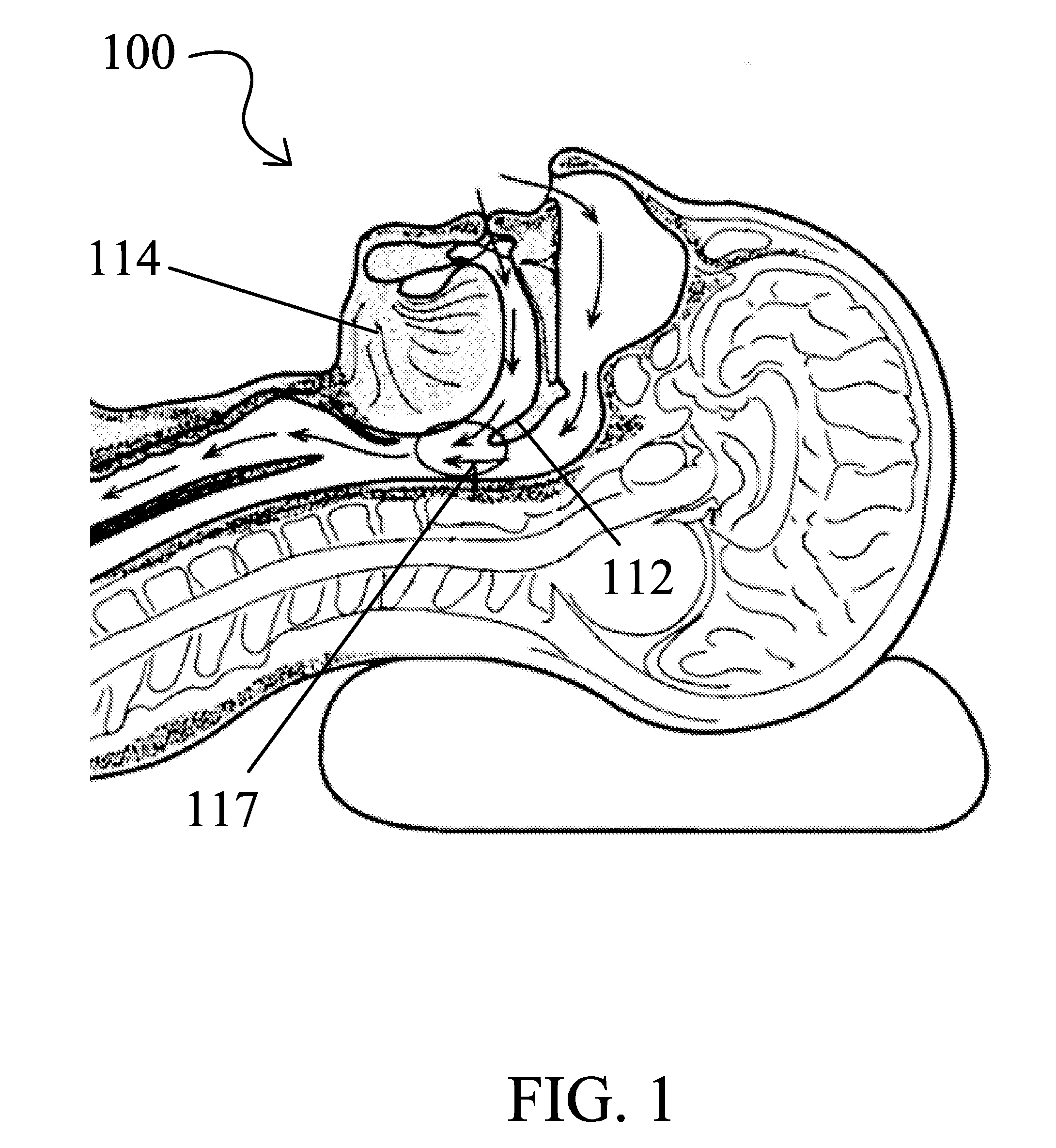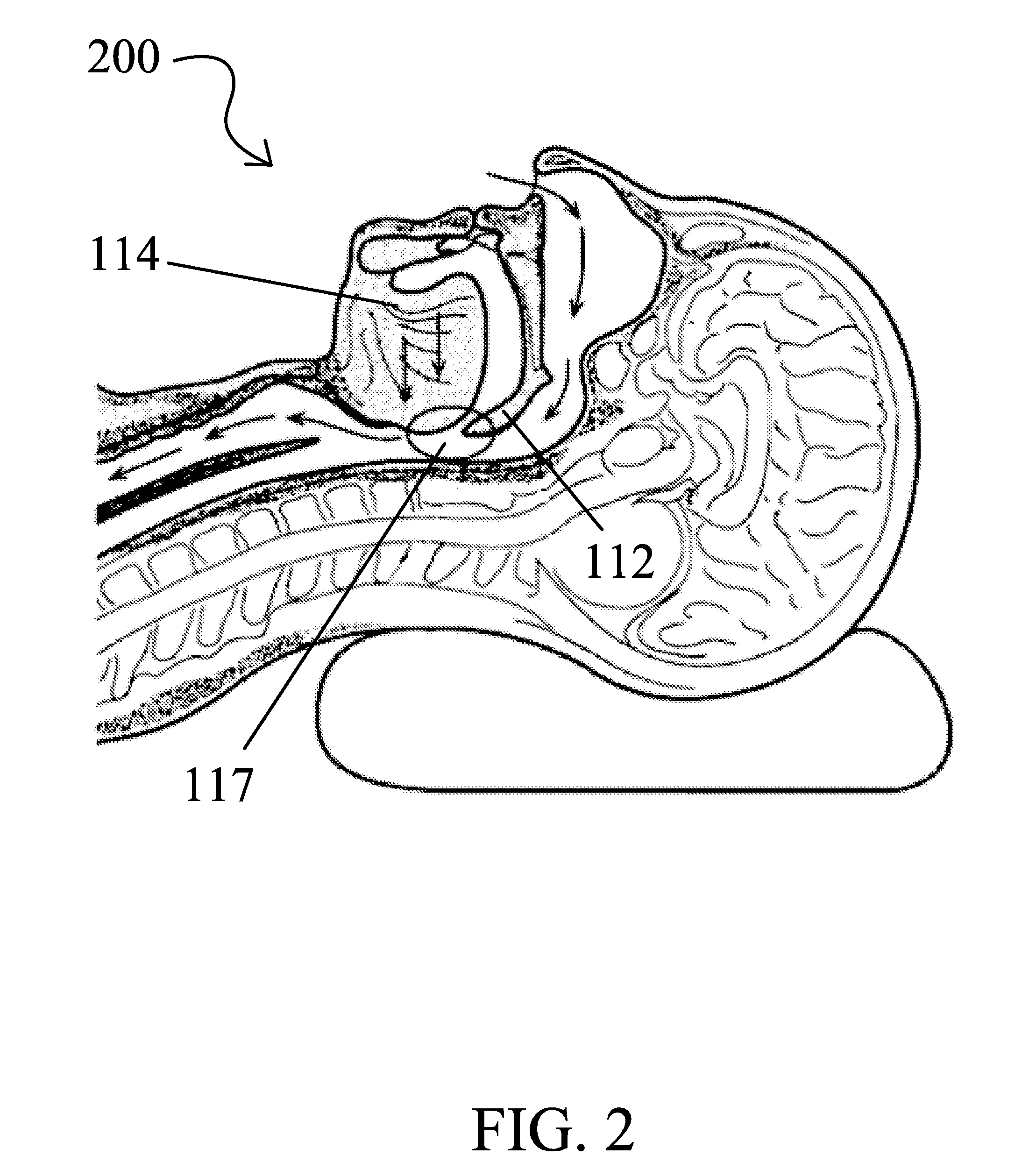However, frequent, loud snoring may be a sign of sleep
apnea, a common and potentially serious disorder in which
breathing repeatedly stops and starts as you sleep.
Although sleep
apnea is treatable, it often goes unrecognized.
Untreated sleep
apnea can be dangerous and detrimental to your health, so it's important to see a doctor if you suspect that you or a loved one might have it.
This
medicine would be ineffective if swallowed.
Hence, the tongue is constantly subjected to trauma, whether intended or unintended.
During
hypopnea, there is
airflow, through a much-reduced level, which leads to not getting enough
oxygen.
1.
Obstructive sleep apnea (OSA) is the common form of the condition when the tissues of the naso-oro-laryngeal-
pharynx obstruct
breathing during sleep. These pauses in breathing are called apneas (literally, “without breath”), and usually last 20 to 40 seconds. More than 28 million suffer from OSA in the US and its occurrence in the adult
population is estimated to be 3-4% in women and 6-7% in males. People who suffer from
weight gain,
obesity,
craniofacial syndromes (mostly genetic), repair of cleft palpate, Down'
s syndrome, small mandible etc. have a higher risk of developing obstructive sleep apnea than most individuals. Our invention is mainly intended to treat these conditions causing obstructive sleep apnea.
3. Mixed sleep apnea is due to physical oropharyngeal
airflow obstruction associated with central (CNS)
etiology. It is a rare condition that is the most dangerous form of sleep apnea. Therefore, it is the most difficult to treat. The present invention provides a treatment for this form of obstructive sleep apnea.
There are no effective FDA
approved drug treatments for obstructive sleep apnea.
The cigarettes may irritate the
mucus membranes of the upper
airway and oropharynx causing swelling and increased
mucus production.
The disadvantages in using the above prior art devices are that they require expert qualified licensed lab services for fitting of the anti-snoring device to the user's mouth.
Such devices could cause permanent irremediable changes in the bite of the user and permanently alter the jaw position.
These devices do not include an
intra oral dental
overlay to support the tongue against the palate and keep the palate of the user's mouth from reverberating (snoring) during
mouth breathing.
Use of the devices can cause the subject to become non-complaint due to difficulty in its use due to discomfort problems during sleep.
Problems that may occur with CPAP include restless sleep,
dryness of
nose,
throat, and nasopharyngeal tract, cough, excessive dreaming during early use,
nasal congestion, runny
nose, sneezing,
irritation of the eyes and the
skin on the face, abdominal
bloating, and leaks around the
mask when it does not fit properly.
BiPAP machines are more expensive than CPAP machines.
The sleep studies and the CPAP machines are expensive.
The most common problem with CPAP is lack of compliance.
This means that people do not use the
machine every night because the
machine is uncomfortable.
The patient may remove the
machine as they sleep which leaves the patient sleepy the next day due to repeated interruption during sleep.
The valves let air in easily—most people breathe through their nostrils while asleep—but there is resistance as the user exhales.
That resistance creates a backpressure in the airways, dilating the muscles that would otherwise collapse in the middle of the night.
This device is not effective in all cases.
Some people do experience difficulty inhaling and exhaling air, and are uncomfortable due to the buildup of
positive pressure during exhaling and take longer to fall asleep with the device on.
It is ineffective in severe form of obstructive sleep apnea.
This is both invasive and only effective for mild to moderate cases of obstructive sleep apnea.
Due to many associated disadvantages, complications and high
failure rate, these
tissue ablation methods and radical surgeries considered as a last resort.
Consequences of snoring and obstructive sleep apnea are exhaustion due to lack of sleep, interfering with work, and sleepiness while driving.
Cessation of breathing during snoring, or obstructive sleep apnea results in lack of
oxygen due to an obstructed nasopharyngeal passageway that deprives the body of sufficient
oxygen with oxygen desaturation arises.
Lack of oxygen may cause the brain to awaken the sleeper to take a breath without fully waking.
The snorer and OSA patients do not get sufficient sleep.
Furthermore,
narcolepsy resulting from exhaustion can cause a lack of attention for the snorer and OSA sufferers during waking hours causing a drop in productivity and
accident proneness at work, driving, and other daily activities.
Many of these are invasive procedures, and patients are not willing to undergo these drastic procedures.
Besides the expenses, the success rate is not guaranteed
This
nasal spray is too simplistic to a complicated anatomically related snoring with or without obstructive sleep apnea whose
pathophysiology is not in the
nose.
This may not be effective in preventing the vibration of the
soft palate and snoring with or without obstructive sleep apnea.
U.S. Pat. No. 7,016,736 B2 discloses a submental electrical stimulation of the supra hyoid muscles at the floor of the mouth, and does not address the snoring due to vibration of the
soft palate and uvula.
Numerous management techniques have been described, and none of these treatments have proved adequate.
Most of the therapies are inadequate to treat snoring and obstructive sleep apnea.
Surgery for the condition is fraught with fear and complications besides high cost and
high rate of failure.
Hence, snoring and obstructive sleep apnea remains a serious health problem.
 Login to View More
Login to View More  Login to View More
Login to View More 


